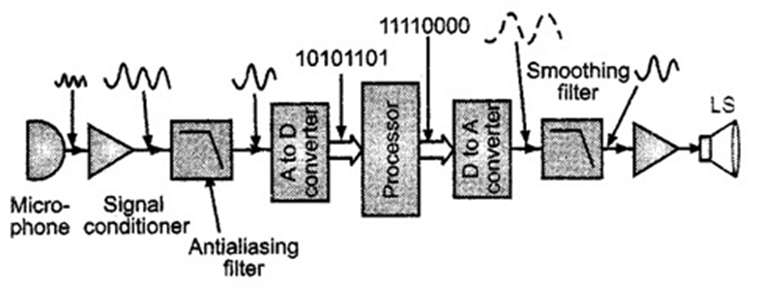- A processor (CPU) is the logic circuitry that responds to and processes the basic instructions that drive a computer. The CPU is seen as the main and most crucial integrated circuitry (IC) chip in a computer, as it is responsible for interpreting most computers’ commands. The term processor is used interchangeably with the term central processing unit (CPU). Processors can be found on PCs, smartphones, tablets, and other computers. The two main competitors in the processor market are Intel and AMD.
![]()
The basic elements of a processor include
- The arithmetic logic unit (ALU)
- The floating point unit (FPU)
- Registers
- L1 and L2cache memory
- The primary functions of a processor are fetched, decode, execute and write back.
- Fetch receiving instructions from program memory from a system’s RAM.
- Decode is where the instruction is converted into a language similar to that of a CPU so that the CPU continues the operation. This is performed by the instruction decoder.
- Execute is where operation is performed. The part of the CPU that is needed for execution is activated to carry out the instructions.
The type of processor we are to focus on is DSP Digital Signal Processor.
![]()
- A DSP is a specialized microprocessor used to perform calculations on signals that are been digitally converted from the analog domain. The ability of programming is the function of the processor. DSPs are designed for digital signal manipulations.

![]()
In the above block diagram
- A Microphone is used as a transducer(which changes the sound signal into an electrical signal). The analog electrical signal is generated from a microphone and given to an op-amp to amplify the analog signal.
- An anti-aliasing filter is an LPF (low pass filter) that is located on the input of an ADC. This filter is used to band-limit wideband signals.
- ADC converter unit uses analog signals & outputs as binary digits streams.
- In this block diagram, the DSP is the heart of the system. At present, CMOS ICs are used to make DSPs that have high data throughputs, dedicated instruction sets & high speed.
- DAC converts digital to analog signal.
- The smoothing filter is another LPF used to smoothen the output by eliminating unnecessary high-frequency components.
- Here, a speaker is the output transducer. So you can utilize anything else based on your requirements.
DSPs are classified as general DSP and special DSPs
- The general DSP is designed for applications such as digital filtering, correlation, convolution, and FFT.
- The special DSP is designed for unique applications such as audio processing, compression, echo cancellation, and adaptive filtering.
Here, we focus on the general DSP
![]()
- The most popular DSP ICs used on these cards are the Texas Instruments TMS320 families of 16- and 32-bit processors. These chips are general-purpose processors.
DSP architecture of three types
- Von nuemann Architecture
![]()
- Harvard Architecture
![]()
- Super Harvard Architecture
![]()
Types of Digital Signal Processor
- Fixed-point digital signal processor
- Floating-point digital signal processor
